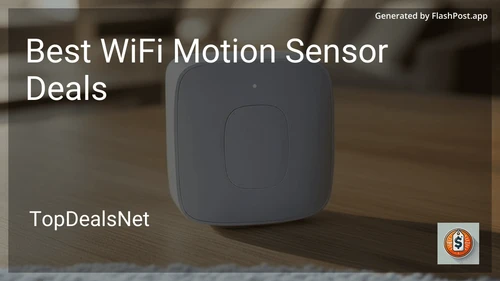Best WiFi Motion Sensors to Buy in December 2025
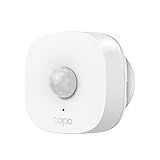
TP-Link Tapo Motion Sensor, Requires Tapo Hub, Long Battery Life w/Sub-1G Low-Power Wireless Protocol, Wide Range Detection, Adjustable Sensitivity, Real-Time Notification, Smart Action, Tapo T100
-
WIDE 120° DETECTION: CAPTURE MOTION FROM 23 FEET FOR ENHANCED SECURITY.
-
SMART ACTIONS INTEGRATION: EFFORTLESSLY CONTROL TAPO DEVICES WITH MOTION TRIGGERS.
-
LONG BATTERY LIFE: UP TO 2 YEARS ON ONE BATTERY, SAVING YOU TIME AND MONEY.


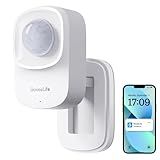
GoveeLife Human Presence Sensor, 2.4 GHz Wi-Fi Required, Smart mmWave Radar & PIR Wired Motion Sensor, Zone Positioning, Multi-Person Detection, Support Alexa & Google Home, for Indoor Home Automation
-
ULTRA-HIGH ACCURACY DETECTION: RADAR & INFRARED TECH FOR PRECISE PRESENCE SENSING.
-
SMART TARGET EXCLUSION: DUAL DETECTION MINIMIZES FALSE ALARMS FROM PETS & APPLIANCES.
-
FLEXIBLE AUTOMATION: CUSTOMIZABLE RESPONSES BASED ON PRESENCE & DISTANCE SETTINGS.



Kasa Smart WiFi Motion Sensor Switch, Single Pole, Needs Neutral Wire, 2.4GHz Wi-Fi Light Switch, Compatible with Alexa & Google Home, UL Certified, No Hub Required(KS200M),White,1-Pack
-
HANDS-FREE OPERATION: MOTION DETECTION AUTO-ACTIVATES LIGHTS FOR CONVENIENCE.
-
SMART CONTROL: VOICE COMMANDS AND APP MANAGEMENT FOR EFFORTLESS USE.
-
SAFE & RELIABLE: UL CERTIFIED WITH A 2-YEAR WARRANTY FOR PEACE OF MIND.



Aqara Zigbee Motion Sensor P1 3 Pack, Smart Motion Detector for Alarm System and Home Automations, 5-Year Battery Life, Pet Friendly, Compatible with HomeKit, Alexa, HomeKit, IFTTT, Requires Aqara Hub
-
5-YEAR BATTERY LIFE: ENJOY LONG-LASTING PERFORMANCE IN ANY ENVIRONMENT.
-
CONFIGURABLE DETECTION TIMEOUT: CUSTOMIZE SENSITIVITY FOR PRECISE DETECTION.
-
SMART HOME INTEGRATION: EASILY SET UP ALERTS WITH AQARA & HOMEKIT AUTOMATIONS.


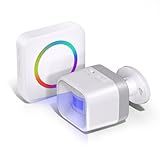
Wireless Motion Sensor Door Chime, Motion Detector Alarm Indoor with 500 FT Range Security Alert Monitor System for Home/Garage Door/Store, USB/Battery Powered
-
CUSTOMIZE ALERTS: CHOOSE FROM 58 TONES & 5 VOLUME LEVELS, INCL. SILENT MODE!
-
ELDERLY MONITORING MADE EASY: MOTION DETECTION FOR CAREGIVER PEACE OF MIND.
-
EXPAND YOUR SECURITY: PAIR 58 SENSORS TO ONE RECEIVER FOR VERSATILE COVERAGE!


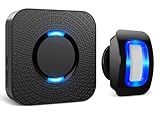
Wireless Motion Sensor LED Light - Motion Detector Alarm Chimes Door Sensor with 500 FT Range Security Alert Monitor System for Home, Business, Store, Office, School
- 58 RINGTONES & 5 VOLUME LEVELS FOR PERSONALIZED ALERTS!
- EXPANDABLE DESIGN WORKS WITH UP TO 20 SENSORS AND RECEIVERS!
- LONG 500 FT RANGE ENSURES SECURITY COVERAGE IN YOUR HOME!


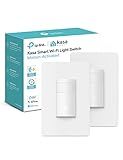
Kasa Smart Motion Sensor Switch, Single Pole, Needs Neutral Wire, 2.4GHz Wi-Fi Light Switch, Works with Alexa & Google Assistant, UL Certified, No Hub Required(KS200MP2),White,2-Pack
- HANDS-FREE OPERATION: SMART SWITCHING ACTIVATES LIGHTS WITH MOTION.
- VOICE & APP CONTROL: CONTROL LIGHTS VIA ALEXA, GOOGLE, OR KASA APP.
- TRUSTED SAFETY: UL CERTIFIED WITH A 2-YEAR WARRANTY FOR RELIABILITY.



eMylo WiFi Motion Sensor 2 Pack, Smart Wireless Presence Sensor Detector with App Notification Alert, Home Security System PIR Motion Detector Compatible with Smart Life App(2.4 GHz Wi-Fi Required)
-
RECEIVE INSTANT ALERTS FOR SUSPICIOUS MOVEMENT, EVEN WHEN AWAY.
-
EASY SETUP WITH NO HUB NEEDED: CONNECT VIA 2.4G WIFI & TUYA APP.
-
LONG BATTERY LIFE LASTS UP TO 2 YEARS WITH FAMILY SHARING FEATURE.


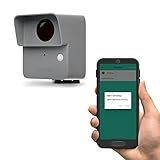
YoLink LoRa Smart Outdoor Motion Detector Sensor, Driveway Alert, Property Invasion/Tresspassing Detector, 1/4 Mile Open Air Range, Email/SMS/Push Alerts, Alexa, IFTTT, Home Assistant (Hub Required)
-
SECURE YOUR PROPERTY WITHOUT MONTHLY FEES-SELF-MONITOR FOR FREE!
-
WIRELESS CONVENIENCE: INSTALL SENSORS ANYWHERE, NO ELECTRICIAN NEEDED!
-
PAIR DEVICES EASILY FOR COMPREHENSIVE PROTECTION, NO WIFI REQUIRED!


Introduction
In the rapidly evolving world of smart home technology, WiFi motion sensors have emerged as an indispensable tool for homeowners looking to enhance security and automate their living spaces. With so many options available, it can be challenging to navigate through the myriad of deals to find the best one that suits your needs. This guide is designed to help you understand the features and functionalities of WiFi motion sensors, enabling you to make an informed decision without the stress of sales pressure.
Understanding WiFi Motion Sensors
WiFi motion sensors are intelligent devices designed to detect movement within a specific area and communicate this information via a wireless network. They can trigger alerts, activate other smart devices, and even integrate with home automation systems.
How They Work
WiFi motion sensors typically use technologies like Passive Infrared (PIR), microwave, or ultrasonic waves to sense motion. Once motion is detected, these sensors send a signal to connected devices or directly to your smartphone, providing real-time updates.
Key Features
- Wireless Connectivity: The major advantage of WiFi motion sensors is their ability to connect seamlessly with your network, offering easy setup and integration with other smart home devices.
- Real-Time Alerts: Receive instant notifications on your smartphone, enabling you to respond quickly to any unusual activity.
- Integration: Many sensors are compatible with popular smart home ecosystems such as Amazon Alexa, Google Assistant, and Apple HomeKit.
Factors to Consider When Choosing WiFi Motion Sensors
Selecting the right WiFi motion sensor involves evaluating various factors to ensure it meets your security and home automation requirements. Here are some essential considerations:
Detection Range and Sensitivity
- Range: Consider the area you need to monitor. Sensors with a longer detection range are suitable for large areas, while those with adjustable sensitivity can help reduce false alarms in smaller spaces.
- Adjustability: Ensure the sensor allows you to customize sensitivity settings to avoid triggers from pets or environmental factors.
Battery Life and Power Supply
- Battery-Powered: Opt for sensors with long-lasting batteries, reducing the frequency of replacements.
- Wired Options: Some sensors offer wired power supply alternatives for consistent performance without the need for battery maintenance.
Smart Integration
- Compatibility: Verify that the sensor works with your existing smart home network and the devices you plan to automate.
- App Features: Explore the app's capabilities. Look for user-friendly interfaces, alert customization, and remote management.
Installation Process
- Ease of Installation: Choose sensors that offer simple, do-it-yourself installation with minimal tools required.
- Mounting Options: Consider sensors with versatile mounting options to ensure optimal coverage.
Evaluating Deals and Offers
When looking for the best deals, it is crucial to consider not just the price but also the value proposition. Here are some tips:
Compare Specifications
Before making a purchase, compare the specifications of various models to understand the differences in terms of features, performance, and compatibility.
Read Reviews
Check user reviews and expert ratings to gauge the reliability and effectiveness of a motion sensor. These insights can provide valuable information about the product's real-world performance.
Warranty and Support
Consider the manufacturer's warranty and customer support options. Products with comprehensive warranties and responsive support are generally a safer investment.
Conclusion
WiFi motion sensors are an integral part of modern smart home ecosystems, offering enhanced security and automation possibilities. By understanding the key features and making informed decisions based on your specific needs, you can find the best WiFi motion sensor deals tailored to your requirements. Keep these guidelines in mind, and you will be well-equipped to enhance your home with the latest in smart technology.
